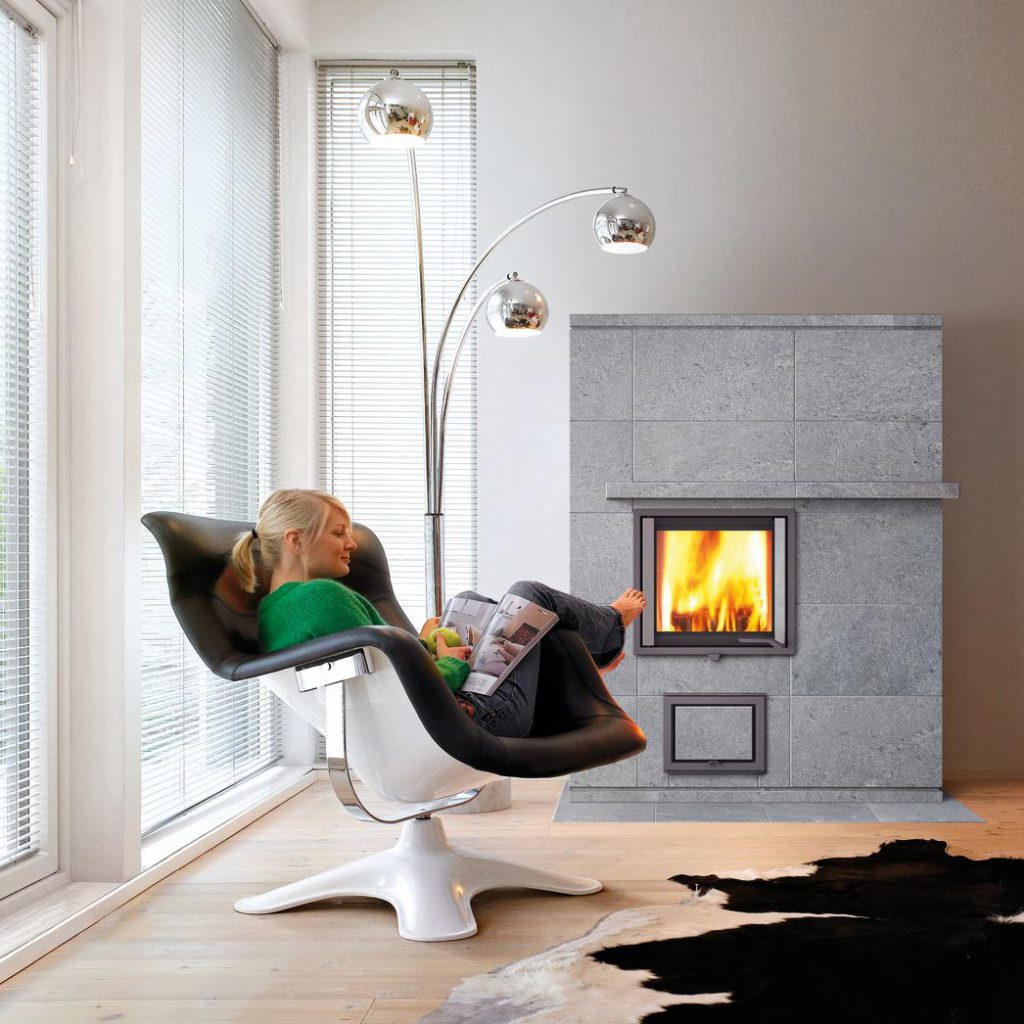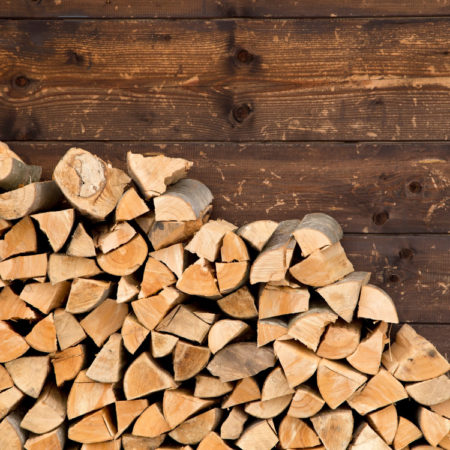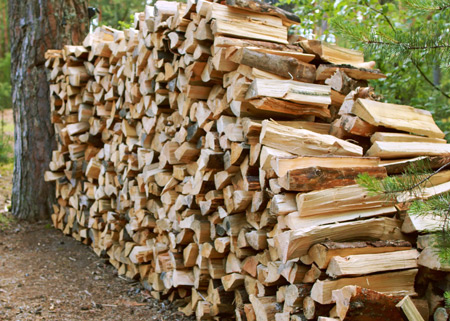Using your fireplace correctly
With proper use of the fireplace, you ensure burning is as energy-efficient and clean as possible. In addition to the fireplace’s capabilities, low-emission burning requires the use of dry wood as fuel. The capabilities and use methods vary between fireplaces, so always make sure to read the operation guide of your fireplace carefully.
Lighting the fireplace
Before lighting the fireplace, ensure there is adequate combustion air and flue draft. The draft of a cold fireplace can be checked by slightly opening the fireplace door and lighting a match. If the flame doesn’t turn towards the fire chamber, the flue does not have adequate draft. In that case, remove the cleaning hatch and warm the flue with, e.g., a heat gun.
Wood requires plenty of air to burn. If the fireplace doesn’t directly receive combustion air, ensure the room receives enough replacement air. If necessary, you can, e.g., open a window.
When lighting the fireplace, use wood 3–5 cm (max 3 cm for stoves) in diameter. Place the wood loosely, with enough kindling on and between the wood. The correct placement and amount of wood can be found in the product-specific operation guide. For kindling, you can use, e.g., firelighters.
Do not use lighter fluid.
Important! The wood in NunnaUuni soapstone fireplaces always needs to be ignited from below.
Igniting the wood from below is the best fit for NunnaUuni’s wood burning method, which enables quick ignition and rise of temperature. The Golden Fire method allows wood to gasify and burn at a high, steady 800–1200-degree temperature throughout the burning process. This high burning temperature both improves the energy-efficiency of the fireplace and minimises the harmful PAHes.
Adding wood
Wood should be added when roughly half of the previous amount of wood has burnt. Added wood should be larger, 8–10 cm (5–8 cm for stoves) in diameter. Make sure to adhere to the maximum amount of wood and heating period outlined in the fireplace-specific operation guide.
The best way to ensure the correct amount of wood for your fireplace is to weigh the wood on the first uses.
Make sure there is a suitable draft throughout the heating phase. The product guide outlines the correct combustion air settings, which should be observed to ensure the best burning result. Too little draft and lack of combustion air causes soot and creosote build-up in the smoke ducts and flues. Creosote reduces heat-storing capability and is also a fire hazard. Draft is ideal when the wood burns steadily with a bright flame.
Keep the fireplace door closed during heating. Do not leave wood burning unattended.
The embers phase begins when half of the wood added last has burnt. Opening the Golden Fire grate for the embers phase increases the air flow through the embers and speeds up the burning. Embers burning quickly is the most efficient for heating.
The burning of embers also produces dangerous carbon monoxide. Close the flue damper only after the coals have finished burning and no longer glow.
Important! When heating, always adhere to the fireplace-specific operation guide.


Only burn dry wood in the fireplace
Only use dry wood for burning. It burns well and provides the best heating benefit. The moisture percentage of fresh wood is approximately 45–55%. The ideal moisture content of fireplace firewood is 15–20%. If the firewood is too high in moisture, the burning temperature is reduced, the efficiency of the fireplace suffers and emissions are produced, and the flue’s draft is weakened. Combustion gases with a high moisture content also cause creosote build-up in the fireplace and flue, increasing the risk of a flue fire.
How should firewood be dried?
Firewood is dried by storing fresh and cleft wood in an aerated space, protected from rain. The length of the drying period varies between different wood species. On average, firewood requires about two years to dry. Dry wood can be identified by a sharp clank when hitting blocks of wood together.
Bring the firewood indoors at least 48 hours before use.

Differences of wood species in heating
Different species of wood have different properties, so their heating values are also different. For example, birch is a dense wood, so its heating value is higher than more porous species of wood.